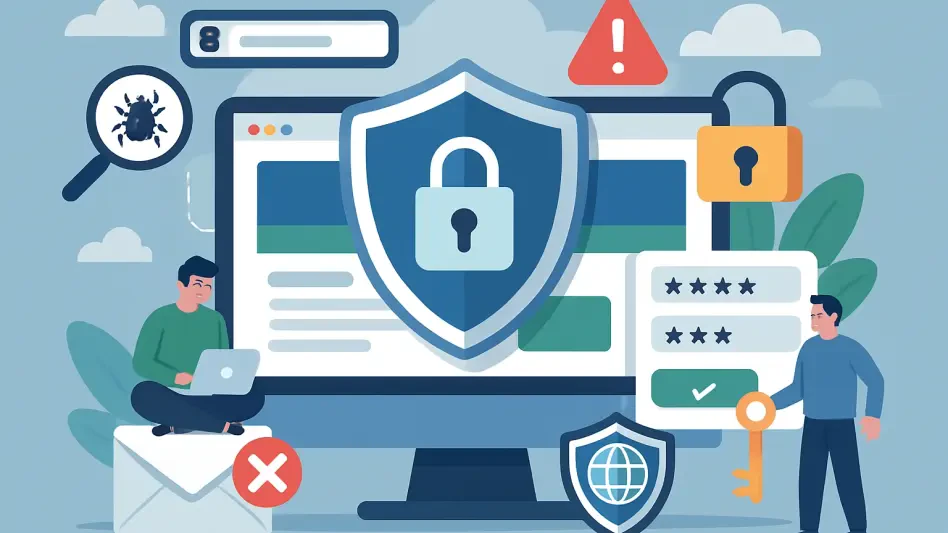Imagine walking into your office kitchen for that first cup of coffee. You press the button on your smart coffee maker, and while it starts brewing, a scary thought comes to you: what else is that blinking light doing behind the scenes? Your coffee machine provides your morning caffeine fix, but it may also collect data about your habits. This data can reveal more than you expect.
Welcome to the future, where everyday devices from coffee makers to thermostats are connected to the internet, providing convenience but also introducing serious security and privacy risks for businesses. This article examines the risks associated with enterprise IoT and offers a security framework for leaders. It focuses on threats to businesses, including data theft through compromised printers and operational disruptions from hacked industrial controllers.
Understanding IoT in the Workplace
IoT, or the Internet of Things, refers to the connection of physical objects, including appliances, devices, and machines, to the internet. These items feature sensors and software that enable them to collect and share data. In business, IoT devices encompass a range of innovative office equipment, industrial machines, and logistics sensors. The main benefits are improved efficiency, real-time monitoring, and automated processes. However, connecting these devices can also create security risks.
Innovative coffee makers, connected printers, HVAC systems, and even security cameras are constantly transmitting data to the cloud. For a company, that means potential exposure of internal workflows, employee routines, and operational details that should remain confidential.
Convenience at a Cost
While the benefits of IoT devices are attractive, ranging from automated coffee brewing and optimized energy consumption to predictive maintenance, they also collect detailed usage data. This information can reveal sensitive patterns such as employee attendance, workflow peaks, and even confidential operational habits.
Hackers can exploit poorly secured IoT devices to gain access to corporate networks. The infamous Mirai botnet attack in 2016 leveraged compromised IoT devices to launch a massive DDoS attack, starkly reminding the world that even small devices can have outsized consequences when companies ignore security.
The Coffee Maker Problem
Innovative coffee makers in offices may seem harmless, but many require an app and cloud connection. That connectivity can provide external parties with insights into employee behavior, such as when teams arrive, when breaks occur, or the number of employees in the office at any given time. Vulnerabilities in these devices have allowed hackers to manipulate settings or spy on usage data. A minor inconvenience for your morning brew, but a potential security breach for corporate information.
Beyond Coffee: Other IoT Risks
The average enterprise has thousands of connected devices operating beyond the scope of its traditional security tools. From smart conference room displays and HVAC systems to industrial sensors on a factory floor, the Internet of Things has quietly become the new, undefended corporate attack surface. While security teams focus on laptops and servers, these seemingly benign devices create a massive blind spot, offering threat actors a direct path into the core network.
Smart TVs and Conferencing Equipment: Voice recognition and camera features could inadvertently transmit sensitive conversations.
Smart Doorbells and Security Systems: Hackers can infiltrate these devices to monitor entrances and employee activity.
Thermostats and Environmental Controls: Data on occupancy patterns can reveal when offices are empty, posing security risks.
These devices collectively create a comprehensive picture of organizational behavior if accessed by unauthorized parties.
The number of connected devices reached 18.5 billion in 2024, which is a 12% increase from 2023. Research from IoT Analytics indicates that, based on data from the first half of 2025, the number of connected IoT devices is projected to increase by 14% annually. By the end of 2025, experts anticipate that there will be approximately 21.1 billion connected devices. The failure to manage and secure this expanding ecosystem poses a significant concern. IoT grids are a critical vulnerability that renders conventional security models obsolete.
Redefining the Enterprise Attack Surface
For security professionals, the term IoT encompasses a far broader and more complex ecosystem than smart home gadgets. In a corporate context, these devices fall into three distinct and often overlapping categories, each presenting unique challenges.
Corporate IoT
These are company-sanctioned and deployed devices intended to improve efficiency and operations. This includes smart lighting, connected security cameras, intelligent climate controls, and even networked coffee machines in the breakroom. While managed by IT, they often lack the robust security features of traditional endpoints.
Operational Technology
This category includes the hardware and software used to monitor and control physical processes in industrial environments. Think sensors in a manufacturing plant, controllers for a power grid, or patient monitoring equipment in a hospital. A compromise here not only risks data loss but can also cause physical damage or disrupt critical infrastructure.
Shadow IoT
The most significant risk comes from unsanctioned devices brought into the network by employees. Smart speakers, personal streaming devices, and even connected fitness equipment can attach to the corporate Wi-Fi, creating backdoors that are entirely invisible to security teams.
From Inconvenience to Corporate Catastrophe
The risks of enterprise IoT go beyond just data privacy issues. A successful attack can have severe consequences for operations and finances, transforming a minor weakness into a major problem.
Here’s a realistic example: a global logistics company installs a new internet-connected climate control system in one of its central warehouses to save energy. The company never changes the system’s default administrator password. A hacker identifies this known weakness, gains access, and utilizes the HVAC system to infiltrate the larger corporate network.
From there, the attacker moves laterally to the warehouse management system, deploying ransomware that encrypts inventory data and shipping manifests. The attack brings operations to a standstill, halting millions of dollars in shipments. The initial breach cost, stemming from an insecure thermostat, cascades into a multi-million-dollar business disruption event, damaging customer relationships and eroding market trust.
A Strategic Framework for Securing Corporate IoT
Addressing the IoT security gap requires a shift in mindset from perimeter defense to a model of comprehensive visibility and control. Organizations must assume that any connected device can be a potential threat and build a strategy based on Zero Trust principles.
This framework should focus on three core pillars:
Total Asset Visibility: You cannot protect what you cannot see. The first step is to deploy an automated asset discovery tool capable of identifying and classifying every device connecting to the network, whether it’s wired or wireless. Observability creates a comprehensive inventory, distinguishes between sanctioned and shadow IoT, and provides a baseline for risk assessment.
Network Segmentation: Once you identify all devices, isolate them. Micro-segmentation creates small, contained network zones that limit communication to only what is strictly necessary. A smart printer, for example, should only be able to communicate with specific print servers, not the company’s financial database. If the printer is compromised, the breach is contained within its segment, preventing lateral movement.
Continuous Threat Monitoring: IoT security requires ongoing setup. Continuous device behavior monitoring is crucial for detecting anomalies. If a security camera suddenly starts trying to access a human resources server or a smart thermostat begins sending large packets of data to an external address, an automated system should immediately flag the behavior and quarantine the device.
Conclusion
IoT is here to stay, and while your coffee maker might not be the most dangerous device in your office, it represents a microcosm of the broader challenges connected devices present. Awareness, preparation, and strategic security measures are essential to ensure that convenience doesn’t come at the cost of corporate safety.
Next time you press that button on your office coffee maker, remember: it might be brewing more than just your morning coffee. You never know, it could also be preparing data insights that need protection.








